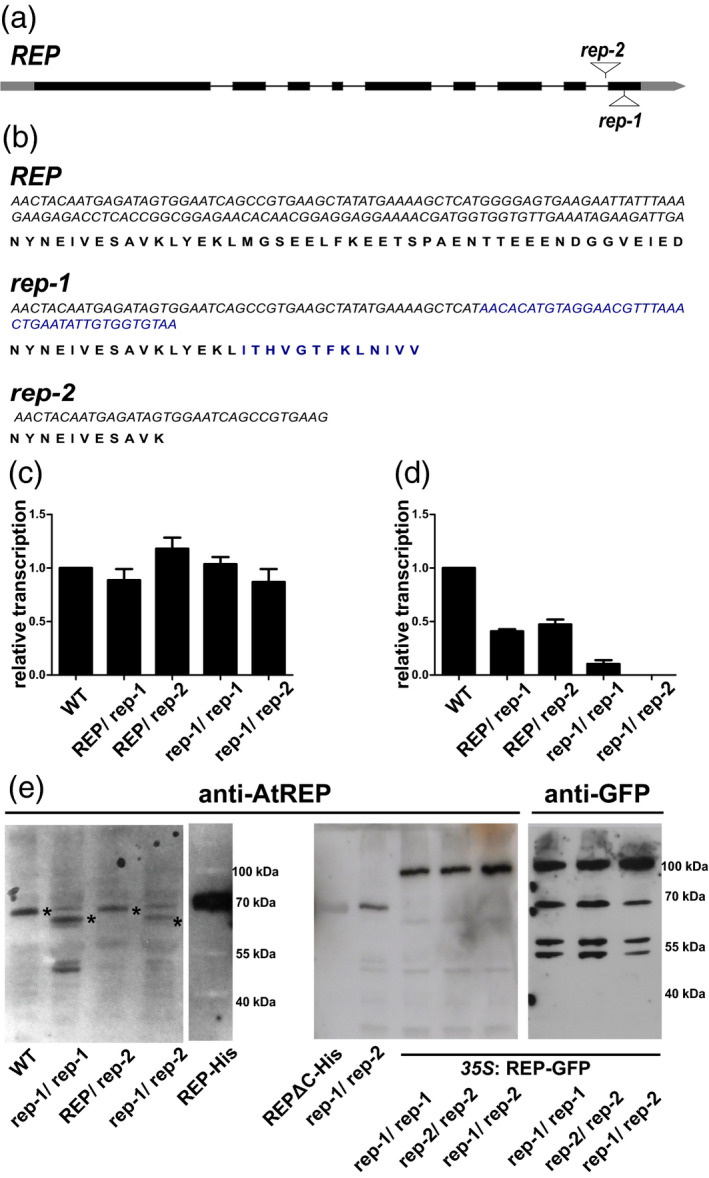Figure 5.

Characteristics of rep mutants in Arabidopsis thaliana.
(a) Gene model of the REP open reading frame, where boxes represent exons, connecting lines represent introns, and sites of T‐DNA insertions are marked.
(b) Nucleotide and (predicted) amino acid sequences of the last two exons of REP in the WT and rep‐1 mutant lines. Blue letters denote the modified 3′ gene region and the corresponding C‐terminal fragment of the rep‐1 allele‐encoded protein, due to the insertion of T‐DNA. Precocious termination of translation in rep‐1 is caused by two consecutive stop codons. The rep‐2 allele carries the T‐DNA insertion in the last intron; shown is only the nucleotide sequence of the previous exon and its translation.
(c, d) RT‐qPCR analysis of the REP gene in WT, REP/rep‐1, REP/rep‐2, rep‐1/rep‐1, and rep‐1/rep‐2 plant lines. Similar analysis for a rep‐2/rep‐2 line could not be performed due to the lack of homozygous plants. (c) RT‐qPCR analysis with a primer pair amplifying a region of the REP gene upstream of both T‐DNA insertions (primers REP‐F3 and REP‐R4; see Table S2). (d) RT‐qPCR analysis with a primer pair amplifying the C‐terminal region of the REP gene, which is absent or modified in the rep‐1 and rep‐2 alleles (primers REP‐F5 and REP‐R6; see Table S2).
(e) Western blot analysis with mouse polyclonal anti‐AtREP as primary antibody. Cytosolic protein fractions from WT, rep‐1/rep‐1, REP/rep‐2, and rep‐1/rep‐2 lines as well as from revertant plants, rep‐1/rep‐1, rep‐2/rep‐2, and rep‐1/rep‐2 overexpressing REP‐GFP under the control of the CaMV 35S promoter, were prepared from rosette leaves of 4‐week‐old plants. Purified recombinant REP‐His and REPΔC‐His were used as controls. Plants carrying the CaMV35S:REP‐GFP construct were also probed with an anti‐GFP antibody. Equal amounts of total protein were loaded in each lane, apart from the recombinant proteins used as controls. Asterisks on the left panel mark REP protein variants. Note the non‐specific band migrating at a similar molecular weight as WT REP. Images of all mutant and revertant plants are shown in Figure S7.
